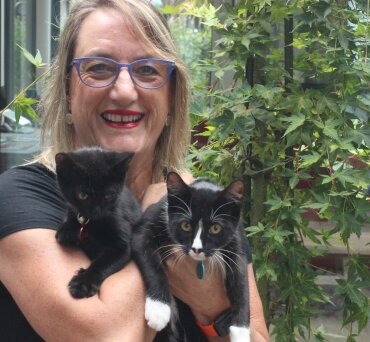

Cats are cute – but there are calls to limit their numbers.
A Waipā district councillor finds it “puzzling” the council has invested so much in protecting native species but has no regulations on cats who prey on them.

Marcus Gower
Marcus Gower supported a submission from Forest and Bird Society, calling for limits on cat numbers in Waipā at the council’s Strategic Planning and Policy committee meeting this week.
“I don’t want to see the cat issue dropped off again,” Gower said. “If you’ve got any more than three cats, that’s an issue. It becomes an issue to the neighbours.”
The committee considered a draft animal nuisance bylaw and cats and bees were most controversial. Members pushed back and deferred the bylaw’s adoption so staff could work further on the wording.
The draft by law went out to public consultation in November and attracted 21 submissions. Several were miffed at the omission of cats, another wanted horses banned from Cambridge and Te Awamutu streets, a Kihikihi woman wanted to be able to keep her pet pig and a beekeeper took exception to the suggestion beehives should be sited no closer than five metres from a property’s boundary.
Amelia Geary of the Forest and Bird Waikato branch called for a limit of three cats for each household and for every domestic cat to be neutered and microchipped.
She criticised the council for its level of consultation about cats when it drafted its bylaw.
“Domestic cats pose a significant risk to native and endemic birds, lizards and insects. The detrimental direct effect of cats on native species has been widely documented,” she said.
Geary acknowledged the position cats hold as a valued companion animal to loving owners.
“As a loved animal, these owners also need to take responsibility for their cat’s behaviour and safety. Limiting the number of cats on a property and ensuring all cats are desexed and microchipped is the bare minimum of this responsibility.”
Raquel and Dale Richards wanted cats included in the bylaw too.
“We have a significant amount strolling on our property, breeding and hiding kittens, spraying and lying on our outdoor furniture and constantly breaking into our rubbish.”
There was no accountability or regulations for cat owners, they said.
On the bee issue, Phil Evans from Hamilton said putting beehives under a washing line or in the middle of the lawn, so they were five metres from the boundary, was a nonsense.
“It’s fence height that is more critical than location. It is irrelevant, and distance from boundary needs to be removed from the bylaw.”
The council received six complaints about bees in the last five years and the complaints were easily resolved, he said.

Roger Gordon
Cr Roger Gordon said he could not understand why bees were in the bylaw when the issue was quite minor
“…the nuisance value isn’t there so why do you seek to limit the number of beehives?” he asked.
Committee members asked for the revised draft bylaw to come back before this year’s local body elections.

Carey Church, with kittens Portia, 3 months, left and Pixie, 4 months, right. Both cats came microchipped and neutered from the New Lives Animal Rescue charitable trust in Cambridge. The trust, established in 2014, actively encourages, supports and educates the community on the importance of de-sexing dogs and cats, so that in the future there are less unwanted animals as a result of over breeding. Carey has had cats for 25 years and always ensures they are microchipped and neutered and urges all cat owners to do the same.








